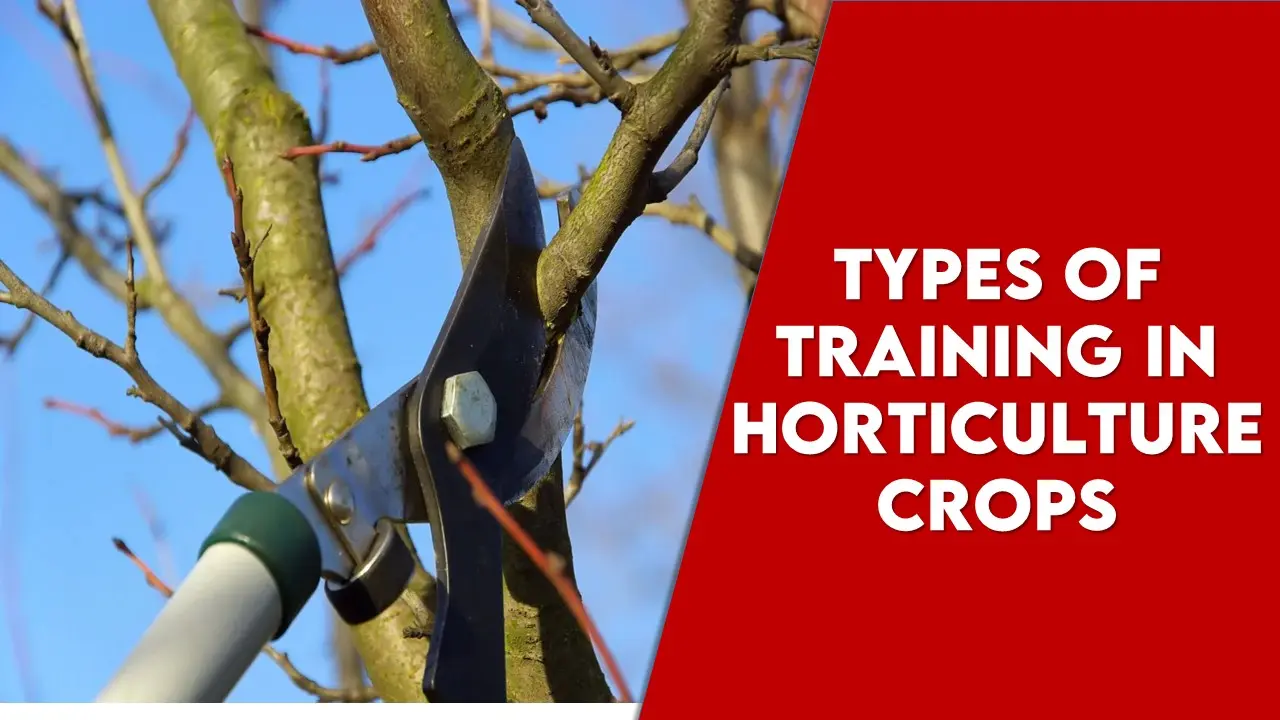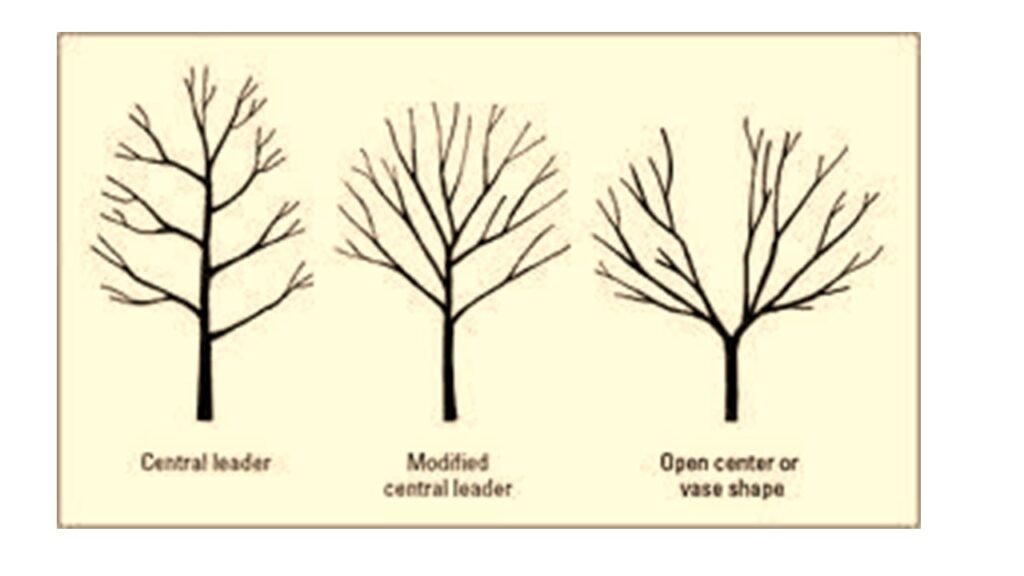Types of Training In Horticulture Crops

What is training
Types of Training in Horticulture is an important operation. When a plant is made to grow, with or without support, in a desired fashion by pruning some of its parts to give the plant a framework, the operation is called “training”.
Need of training
The fruit plants when left to themselves may grow wild and may not bear a satisfactory crop unless trained to a specific form. The untrained plants may pose problems in undertaking day-to-day operations like intercultural, irrigation, plant protection, harvesting, etc. There may not be proper aeration in the orchard and good penetration of light to various parts of the plants. Also there may be unbalanced distribution of fruit bearing parts on the main limbs of the tree.
Time of training
It is very essential to give proper and timely attention to the training of plants right from planting. It is only during the first 2-3 years of plant life that the permanent framework is built up and individual tree hygiene is maintained with less cost.
Types of Training in Horticulture | Types of Training in Agriculture
It is important to decide the height to which the main trunk is to be maintained straight and unbranched from the ground level. If the main branches are retained or induced to grow within 75 cm from the ground, the tree is known as ‘low headed’. But if the branches are allowed to grow at 1.25 m or higher, it is called ‘high headed’ training. Under tropical conditions, high headed training is not desirable, except under conditions where the land is to be used for grazing. Very high headed trees are prone to wind damage and sun scald, whereas low headed trees come to bearing comparatively much earlier and are able to withstand stormy winds efficiently and it is easier to perform operations like spraying, harvesting, etc.
In training, it is very important to form the main framework of a tree. Two to four main branches are encouraged and distributed in different directions. The branches are spaced at about 15 cm apart. If two or more branches are encouraged from one place at a narrow angle, they form a bad crotch and often break at the common joint. For efficient training, considering the natural growth habit of plants, the following systems are commonly adopted. The Types of Training In Horticulture crops are listed below:
Central leader system of training
In this system, the main stem of the tree is allowed to grow straight from the ground level to the top of the tree, which is called the central axis, and smaller side branches grow from it in various directions. Such trees grow tall, but bear fruits mostly near the top. The lower branches gradually become less vigorous and less fruitful.
Open Centre System of training
In this system, the main stem of the tree is allowed to grow up to a certain desired height and the top is headed to induce lateral branches, resulting in a low headed and open centre tree having an inverted cone shape. In this system, full sunshine reaches all branches, and the crop is borne closer to the ground. It greatly facilitates harvesting and thinning of fruits, as well as plant protection operations.
Modified Central leader system
This system is a modification of the first two systems, viz. – central leader’ and ‘open centre’. It is developed first by training the tree to the central leader type and after some time, lateral branches are induced to grow, fairly well distributed, widely spaced, and spread on all sides but not as open as ‘open centre’. Thus the tree is fairly strong and moderately spreading.

Procedure of training
Remove the branches which are turning towards the central axis from their bases. Remove the water shoots, i.e. branches arising from the scaffold limbs and growing vigorously and erect. These are much thicker than normal branches, have much larger and coarser leaves. They grow at the cost of fruit bearing ones. This is very common in citrus plants. Only when the framework has been lost, such vigorous branches are retained to develop a new framework.
Remove the suckers which arise from the roots or underground parts of the stem or very close to the crown. This is observed commonly in guava and pomegranate.. In banana and in pineapple, where the above training methods do not hold good, one or two suckers are retained according to the method of cultivation followed, i.e. ratooning system. Remove certain lop-sided growth to maintain the balance and framework of the tree.
Procedure of Different Types of Training in plants
Simple staking
- Select young plants of about one year of age.
- Prepare wooden stakes slightly longer than the height of the plant.
- Fix the stakes close to the plant on the lower side.
- Tie the main stem at a distance of about 8-10 cm apart at 3 or 4 places, so that the stem does not bend. The stake should remain for a fairly long period, till the stem becomes hard.
Low headed type
- Select a plant of about 1 to 2 years of age.
- Remove all the lower branches on the plant up to a height of about 125 cm above from the ground level, and then allow further branches to grow.
- Observe the plants under heavy wind and bright sunshine.
Central leader system
- Select a plant one or two years old.
- Allow the main stem to grow straight and maintain the small lateral branches as such, so that the plant takes a more or less rectangular form or shape of a cone without much spread.
Open centre system
- Select a plant of about 2-3 years of age.
- Behead the main branch and allow the side shoots to grow.
- Maintain about 3-5 shoots, well spread out in all directions so as to develop good scaffold limbs. The plant should be of the shape of an inverted cone.
Modified leader system
- Select a plant of 2-3 years of age.
- Remove the side shoots in such a manner that 3-5 shoots are retained on the main stem, well spaced and spirally spread in all directions so that the weight of the plant is well distributed on these scaffold limbs.
- Removal of water and other shoots Select big trees which have thrown out water shoots growing straight, and also such other shoots on the branches which are growing towards the main trunk.
- Remove the water sprouts and other shoots which are growing towards the trunk and over crowding
Join Times of Agriculture
Get the latest Agriculture Magazine and regular important updates right on your phone.
👉 Join WhatsApp Group